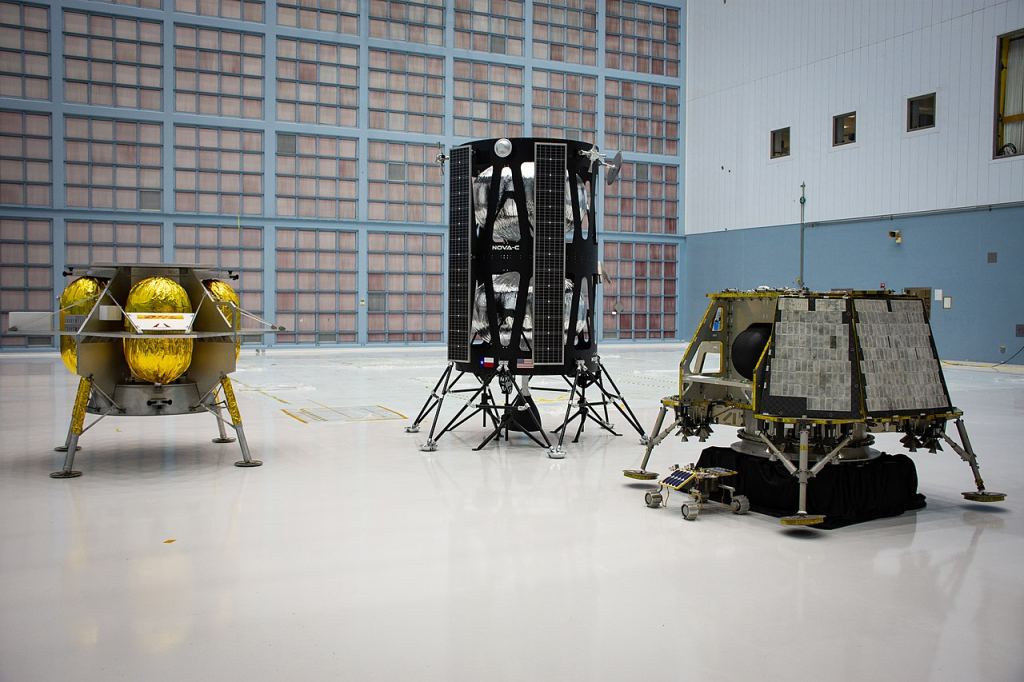NASA to Probe the Secrets of the Lunar Regolith
By Mark Thompson
Gaze up at the Moon on any night and you will see a barren world displaying all manner of shades of grey. Aside from the obvious craters and lunar maria, the surface of the Moon is covered in the fine, dusty lunar regolith. The Apollo astronauts in the 60’s and 70’s learned that it was electromagnetically charged and was very abrasive posing a problem for mechanical equipment. Now a new payload on the Commercial Lunar Payload Services initiative will explore the regolith even further.
The Moon is our only natural satellite. It has a diameter of 3,474 kilometres and is about a quarter the size of the Earth. Orbiting Earth at a distance of 384,400 kilometres, the Moon is our closest neighbour and has inspired artists, authors and scientists alike. From Earth we can only see half of the Moon, the near side due to a phenomenon known as captured or synchronus rotation. The countless craters are the result of meteorite strikes ont eh lunar surface and the darker, larger lunar maria are vast plains of darker solidified lava. As experienced by the Apollo astronauts, the surface is covered in a fine powdery material known as the lunar regolith.

The lunar regolith is the loose, dusty layer of material that covers the solid bedrock of the surface of the Moon. It’s made up of tiny fragments which have been created from the pulverisation of lunar rocks over billions of years by meteoric impacts. It’s mostly composed of minerals like silicates, feldspar and pyroxenes and small quantities of metals too. Whilst it can pose a real challenge to lunar explorers due to its abrasive nature it can also be used to produce oxygen and water and can be a fabulous material for construction of lunar habitats.

Understanding the nature of the lunar regolith is the task of a new science instrument called RAC-1 (Regolith Adherence Characterisation) that will be heading toward the Moon as part of the Commercial Lunar Payload Services (CLPS) initiative. It will be transported to the lunar surface by the Blue Ghost 1 Lunar Lander. CLPS is a program setup by NASA to aid the development of lunar exploration by bringing companies together and taking their payloads to the Moon. It aims to support the Artemis program by providing innovation to space exploration and to help understand more about the lunar environment.

RAC-1 will study the lunar regolith on arrival at the lunar surface. It was developed by Aegis Aerospace from Texas, a company that specialises in space systems engineering, technology development and mission support services. The device will explore how the lunar regolith adheres and sticks to certain surfaces to help understand how it can damage and interfere with mechanical and scientific instruments. This will help understand factors such as electrostatic attraction, abrasive and adherence forces. The low gravity of the Moon and lack of atmosphere will have an impact on how the dust behaves to help understand long term exposure to the harsh lunar environment.
It works by exposing 15 sample materials to the regolith. These include fabrics, paint coatings, optical sensors, solar cells and more. It will measure rates of accumulation during the landing phase and other segments of the mission to learn which materials are best at repelling or shedding collected dust. Future missions like the Artemis program will greatly benefit from these studies.
Source : NASA Science Payload to Study Sticky Lunar Dust Challenge
The post NASA to Probe the Secrets of the Lunar Regolith appeared first on Universe Today.

December 31, 2024 at 03:54AM
via Universe Today read more...

Post a Comment